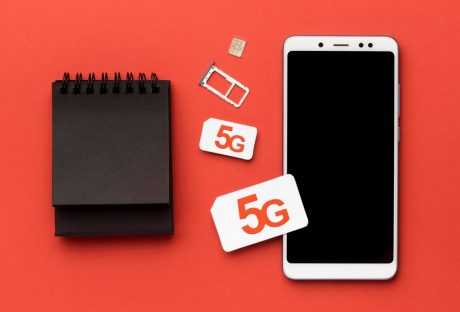The world runs on electrical systems, and many things would stop without them. When something goes wrong, people only notice how critical electrical systems are. They must be safe, reliable, and effective, and electrical infrared thermography inspections ensure they are.
Regular Infrared thermography inspections are very important preventive maintenance for electrical systems. Electrical thermal imaging is utilized for these inspections, which can further detect all the potential issues early on. Moreover, it helps to prevent them from escalating into serious problems.
This very provocative approach is useful for the improvement of safety, reduction of energy costs and further extending equipment lifespan.
What is an Electrical Infrared Thermography Inspection?
Technicians can uncover heat patterns and electrical systems through an infrared thermography inspection. This non-invasive technology detects temperature variations and possible problems behind walls, under floors, and in ceilings.
The problem may be a loose connection, an overloaded circuit, or a faulty component that could lead to significant issues. The inspection allows these problems to be caught early before they become expensive repairs or cause accidents or injuries.
This technology is accurate and safe because the individual completing the inspection never comes into contact with the electrical system. By finding inconsistencies and heat distribution, they can uncover potential problems before they escalate. The technology is used in structural systems, mechanical systems, medicine, and environmental science.
So how does it work?
The trained technicians use these electrical infrared thermography cameras to capture all the images. This is also called a thermogram that shows surface heat variations.
Infrared thermography can detect all issues, such as faulty electrical connections, overloaded circuits as well as bearing failures. Electrical problems can cause costly shutdowns, severe property damage, and, lastly, business interruption.
Infrared thermography can help prevent all these issues by identifying problems before they even become serious.
How Does Infrared Find Electrical Problems?
Infrared cameras, or thermal imagers, can be called special eyes that “see” heat. Everything around emits some heat, and this camera detects the heat and pictures it according to the difference in temperature.
So, how do these help in diagnosing electrical issues?
Component Temperatures At Greater than Normal Operating Levels: As the electrical components are overstressed, faulty, or defect-prone, they usually produce temperatures above those obtained at normal operating temperatures.
An infrared camera would catch this type of abnormal temperature that can indicate some issues before there is a fire breakout or equipment failure.
Loose Connections: Wires or terminals not properly connected are a source of resistance that leads to heating. Infrared cameras can spot these loose connections, thereby preventing arcing, sparking, and fire.
Overloaded Circuits: If a circuit draws more current than its rating, the wires and elements in the circuit get so hot. Infrared cameras will spot such overloaded circuits that might create dangerous conditions.
There are a few advantages that you can achieve, such as:
Early Detection: Early Detection-Infrared cameras are used for the diagnosis of problems at an initial stage, and hence do not require huge repair services.
Safety: Upon the identification of possible fire hazards through infrared cameras, safety features in domestic, commercial as well as industrial environments improve.
Reduced Downtime: Infrared cameras quickly identify problems, reducing equipment downtime and keeping businesses running smoothly.
(In the next section, I will be discussing the major benefits of Electrical Infrared Thermography)
In summary? The infrared camera is an indispensable instrument in the inspection and fault-finding of electrical systems. The cameras produce the necessary effects which are useful in detecting a fault without necessarily damaging the equipment.
The Benefits of Electrical Infrared Thermography Inspections
As previously mentioned, electrical infrared thermography inspections are highly beneficial because they catch problems early before they become significant issues.
Electrical systems are exposed to continuous wear and tear, which can lead to degradation. Improper installation and environmental conditions can also cause problems within these systems.
The technology captures thermal images to uncover abnormalities. The technician can conduct this inspection without halting the system.
This inspection is often part of a more extensive preventative maintenance program, helping reduce unexpected downtime while extending the lifespan of costly electrical parts. Problems are fixed before they escalate.
System performance improves when regular inspections are conducted. These inspections ensure the electrical system is performing at optimal levels. The business owner saves money by not paying for costly repairs or early replacements. Furthermore, efficient systems use less energy.
These thermal inspections ensure the safety of electrical systems. Electrical fires can quickly cause significant damage to a property. The inspections ensure that all components work as intended. The technician also identifies hazardous hot spots to be corrected before catastrophe strikes.
Business owners must comply with safety and operational standards, and thermography inspections help them achieve this goal. Conducting these inspections reduces the risk of the company being fined or encountering a legal or liability issue.
It also shows that the company remains committed to safety and operational excellence, which can help its reputation. Furthermore, these inspections may lower insurance premiums because they show that the business complies with these standards.
Common Uses
Industrial plants often use thermography inspections to monitor machinery and panels and ensure they aren’t overheating. Commercial buildings benefit from these inspections because they confirm all electrical systems are performing optimally.
On top of that, homeowners may request a thermography inspection to ensure no electrical shorts could harm their families or properties. Utility companies also use this technology to monitor their power lines and transformers.
Contact a licensed electrician today to schedule a tomography inspection. The technician reviews the system’s layout to determine which parts need to be inspected. Then, when the system is operating, they use a specialized camera to scan the electrical panel circuits and other equipment.
The thermal images captured by this camera are analyzed to identify hot spots and heat distribution issues. Upon completion of this review, the technician alerts the owner to any potential problems so they can be rectified and the electrical system can be safe again.
Read More:






















